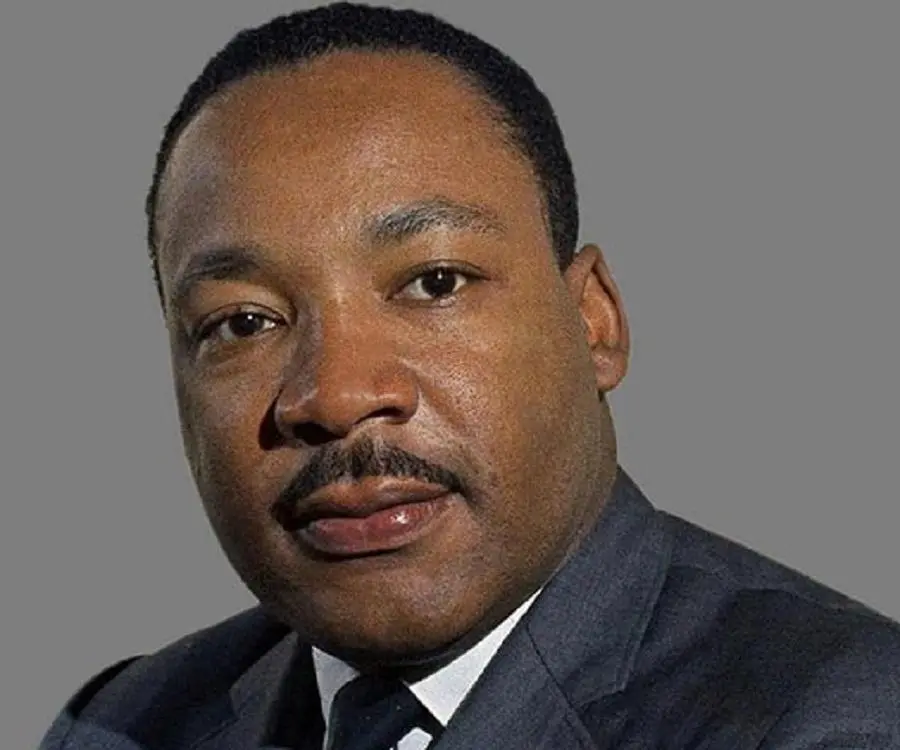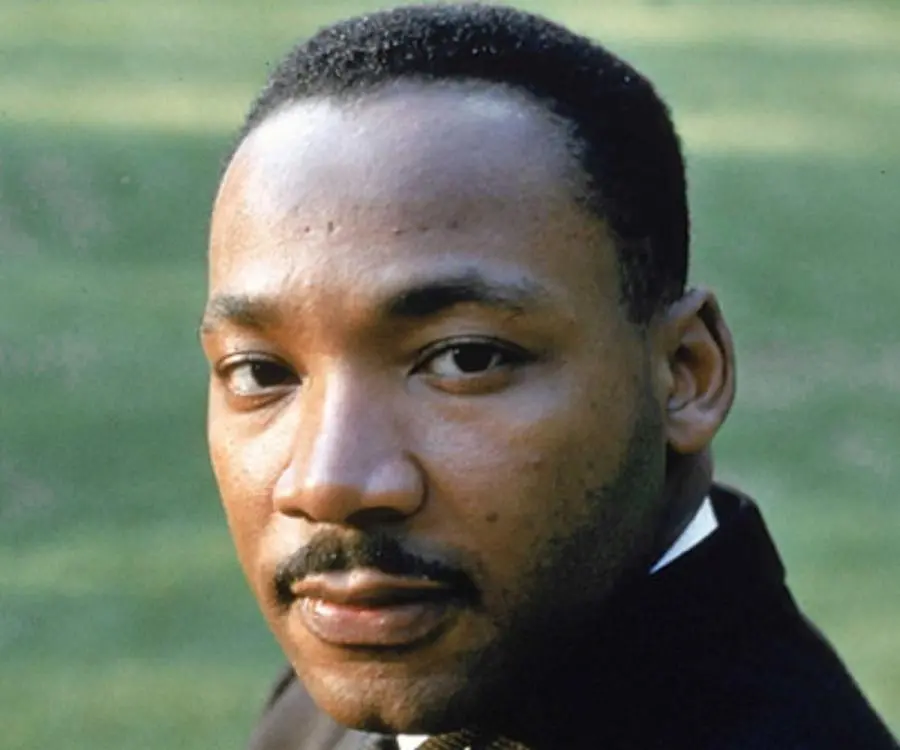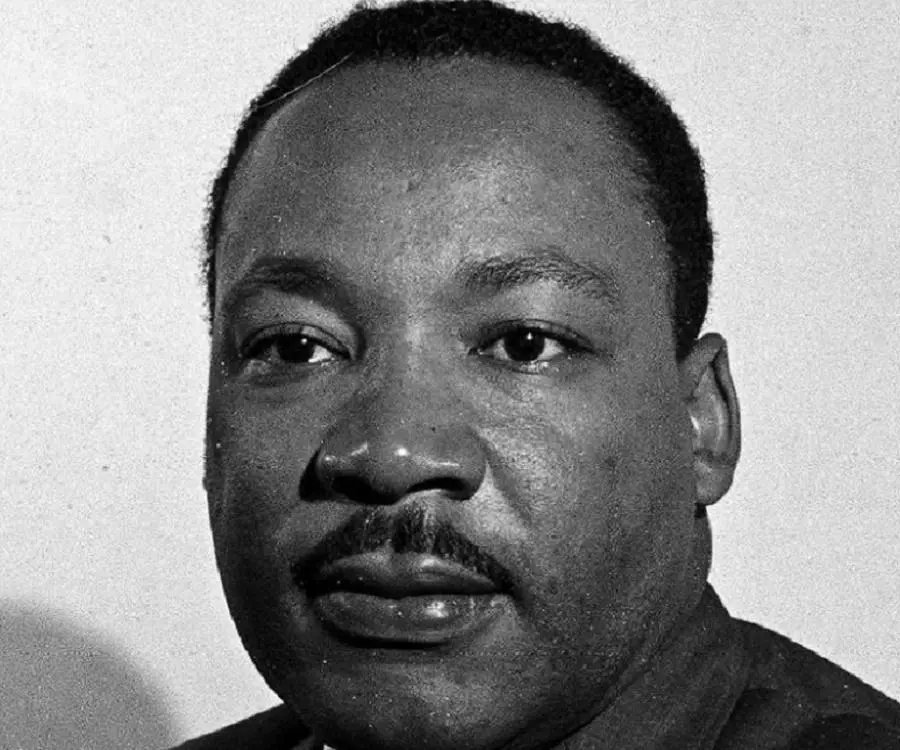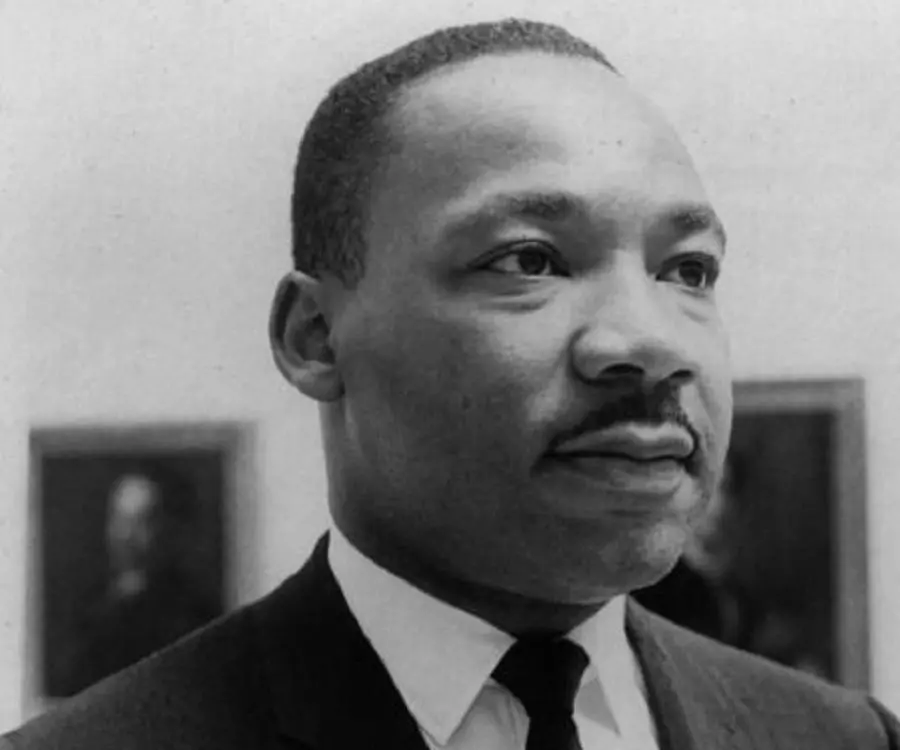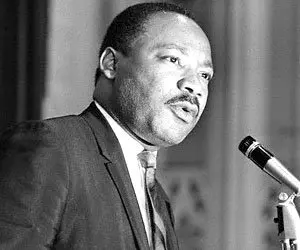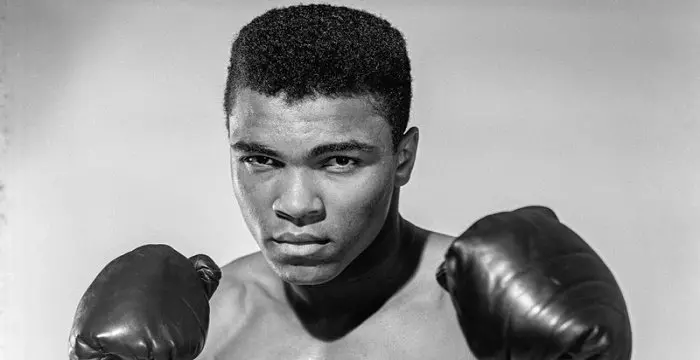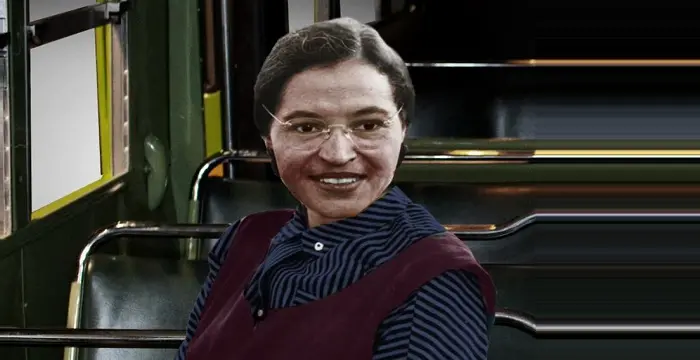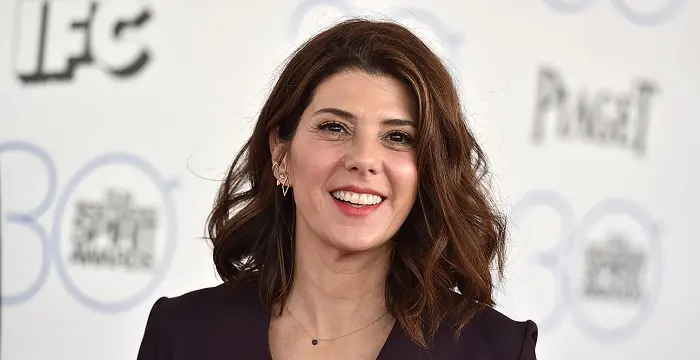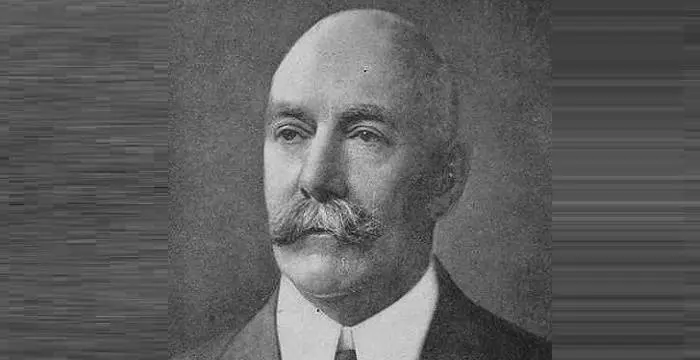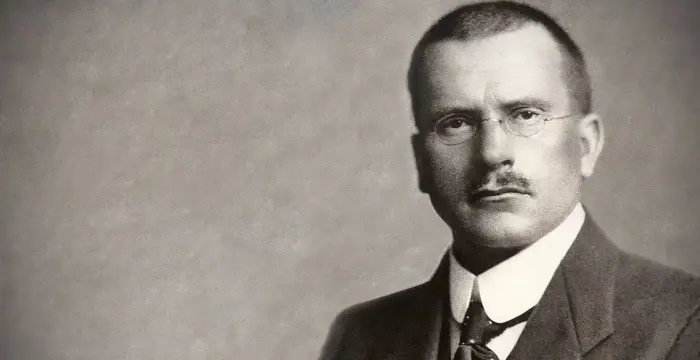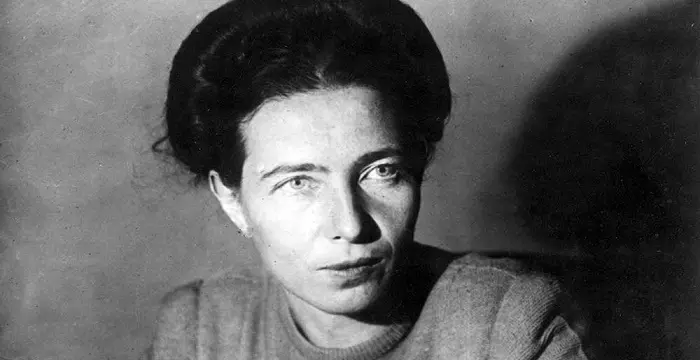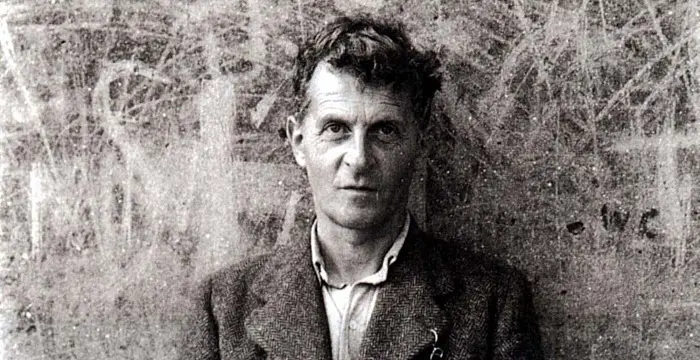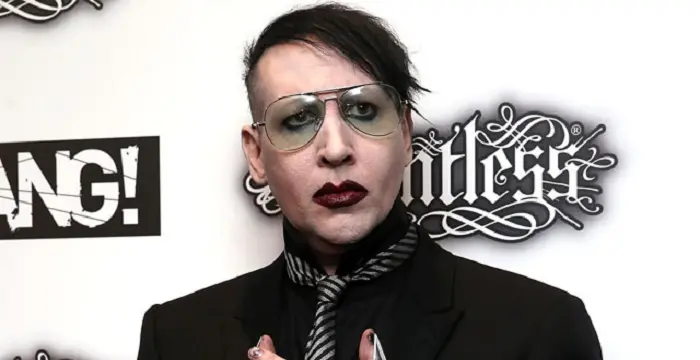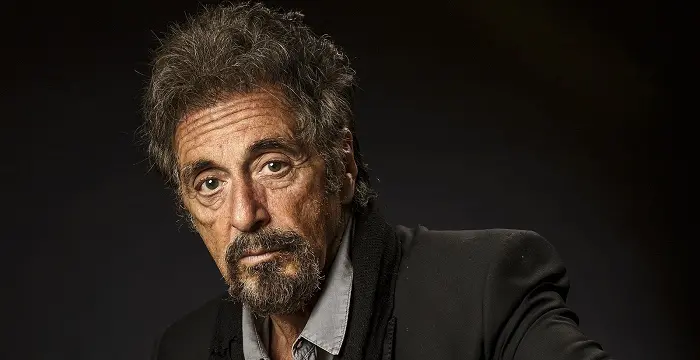
Martin Luther King Jr. - INFJ, Birthday and Childhood
Martin Luther King Jr.'s Personal Details
Martin Luther King Jr
| Information | Detail |
|---|---|
| Birthday | January 15, 1929 |
| Died on | April 4, 1968 |
| Nationality | American |
| Famous | Boston University, Civil Rights Activists, Leaders, Political Leaders, INFJ |
| Spouses | Coretta Scott King |
| Siblings | Alfred Daniel Williams King, Willie Christine King |
| Known as | Michael King Jr. |
| Childrens | Bernice Albertine King (b.1963), Dexter Scott King (b.1961), Martin Luther King III (b.1957), Yolanda Denise-King (1955–2007) |
| Universities |
|
| Notable Alumnis |
|
| Founder / Co-Founder |
|
| Cause of death |
|
| Birth Place | Atlanta, Georgia, U.S. |
| Political Ideology | Peace movement, African-American Civil Rights Movement |
| Religion | Baptist (Progressive National Baptist Convention) |
| Gender | Male |
| Father | Martin Luther King Sr. |
| Mother | Alberta Williams King |
| Sun Sign | Capricorn |
| Born in | Atlanta, Georgia, U.S. |
| Famous as | Civil Rights Activist |
| Died at Age | 39 |
// Famous Political Leaders
Edi Rama
Edi Rama is the current Prime Minister of Albania. Check out this biography to know about his childhood, life, achievements, works & timeline.
Khalifa bin Zayed Al Nahyan
Sheikh Khalifa bin Zayed Al Nahyan is the current President of the United Arab Emirates (UAE). Check out this biography to know about his birthday, childhood, family life, achievements and fun facts about him.
Leo Varadkar
Cam Leo Varadkar is the current Taoiseach—the Prime Minister—of the Republic of Ireland. Check out this biography to know about his childhood, family life, achievements and other facts about his life.
Martin Luther King Jr.'s photo
Who is Martin Luther King Jr.?
Martin Luther King Junior was a leader of the African-American Civil Rights Movement. While fighting against injustice meted to the African-Americans, he carefully shunned violence. His ideas were based on Christian doctrines but for operational techniques he looked towards Mahatma Gandhi’s non-violent movement. His first major campaign was Montgomery Bus Boycott. It not only led to the abolition of racial segregation on Montgomery public transport system, but also turned King Jr. into a national figure and the fiercest spokesperson of civil rights movement. Subsequently, he led many other nonviolent campaigns and gave many inspiring speeches. Later, he expanded the ambit of his movement and started fighting for equal employment opportunity. His ‘March to Washington for Jobs and Freedom’ was one such campaign. In his short life, he was arrested twenty-nine times. He dreamt that one day every human being would be judged by his ability, not by the color of his skin. He died from a white fanatic’s bullet at the age of thirty-nine.
// Famous Civil Rights Activists
Muhammad Ali
Muhammad Ali was a legendary boxer who became the first and only three-time lineal World Heavyweight Champion. This biography provides detailed information about his childhood, life, boxing career, achievements & timeline.
Rosa Parks
Rosa Parks, also known as ‘the first lady of civil rights’ and ‘the mother of the freedom movement’, was a famous African-American civil rights activist. This biography profiles her childhood, life, career, works, achievements and timeline.
Malcolm X
Malcolm X was a renowned African-American Sunni Muslim civil rights activist. This biography provides detailed information about his childhood, profile, career and timeline
Childhood & Early Life
Martin Luther King Jr. was born Michael King Jr. on January 15, 1929 in Atlanta, Georgia. His father, Martin Luther King Senior, also born Michael, was the pastor of the Ebenezer Baptist Church and a civil rights leader in the early stage of the movement.
In 1934, his father attended Fifth Baptist World Alliance Congress at Berlin and came to know about German reformer Martin Luther. Thereafter, he changed both their names from Michael to Martin Luther.
His mother, Alberta Williams King, was an accomplished organist and choir leader. Michael, who was born second of his parents’ three children, had an elder sister called Willie Christine King and a younger brother, Alfred Daniel Williams King.
Martin had his schooling at Booker T. Washington High School, a segregated institution meant for African-American students. Here he not only excelled in studies, but also made a name for himself in public speaking and took part in school debates. He was also a good singer and participated in various choirs.
Yong Martin was much affected by the racial segregation and the accompanying humiliation. He found the law that required blacks to give up their seats in favor of white passengers while travelling in public transport system very humiliating and respected his father for his proud and fearless protest against segregation.
In 1944, Marin Jr. graduated from school, skipping both ninth and twelfth grades and entered Morehouse College at the age of fifteen. Subsequently, he received his bachelor’s degree in sociology in 1948 and entered Crozer Theological Seminary in Pennsylvania for his theological training.
King received his degree in Bachelor of Divinity on May 8, 1951. He then won a fellowship and joined Boston University for his doctoral studies in systematic theology, completing his residence in 1953 and subsequently his Ph.D. on June 5, 1955.
Career
Meanwhile in 1954, Martin Luther King Junior joined the Dexter Avenue Baptist Church in Montgomery, Alabama as pastor. Subsequently, he became a member of the executive committee of the National Association for the Advancement of Colored People and began to work for their rights.
His first major campaign, Montgomery Bus Boycott, was staged in 1955-56. It involved a total boycott of the public buses by the black community and resulted in desegregation of the town’s public transport system.
Next in 1957, Southern Christian Leadership Conference (SCLC) was established and King was elected its President, a position he held until his death. Their aim was to consolidate the black churches and create a platform for conducting nonviolent protests and bring about civil rights reform.
On May 17, 1957, SCLC organized a large nonviolent demonstration, which they called ‘Prayer Pilgrimage for Freedom’. The meeting was held at the Lincoln Memorial in Washington, D.C. In his first national speech titled ‘Give Us the Ballot’, King called for voting rights for blacks.
Later, the SCLC held more than twenty mass meetings in different cities of the south with the aim of registering black voters of the region. Apart from that, King also undertook lecture tours on race-related issues and met with different religious as well as civil rights leaders.
In 1958, King published his first book, ‘Stride Toward Freedom: The Montgomery Story’. While signing copies of the book in Harlem, King was stabbed in the chest with a letter opener by a mentally ill black woman. He had to undergo surgery and remain at the hospital for several weeks.
In 1959, King travelled to India, where he visited Mahatma Gandhi’s place. The trip had a huge impact on him and he became more committed to non-violence.
In February 1960, a group of African-American students began a nonviolent sit-in movement in Greensboro, North Carolina. They would sit in the white section of the racially segregated lunch counters of the city and would remain seated in spite of verbal or physical assaults.
The movement quickly spread to several other cities. In April, SCLC, under King’s leadership, held a conference at Shaw University in Raleigh, where he encouraged students to stick to the nonviolent means and helped to form Student Nonviolent Coordination Committee.
By August, they were able to abolish segregation at lunch counters in 27 cities. Later in the same year, he went back to Atlanta and began working as co-pastor with his father. On October 19, he led a sit-in at the lunch counter of a local departmental store with 75 students.
When King refused to move out of the white area, he, along with 36 others, was arrested but soon released. He again violated probation on traffic conviction and was rearrested. This time too he was let off quickly.
In November, 1961 a desegregation coalition called Albany Movement was formed in Albany, Georgia by local activists. SCLC became involved in this movement in December. King was arrested on 15th and accepted bail only when the city authorities agreed to some of their demands - a promise they did not keep.
King returned to Albany in July 1962 and was rearrested. This time too he refused bail but the police chief discreetly arranged it and he was forcefully released. However, the movement was not very successful but King learned that to succeed, movements should be based on specific issues.
On April 3, 1963 the SCLC, under the leadership of King, began another nonviolent campaign against racial segregation as well as economic injustice in Birmingham, Alabama. The black people, including children, occupied spaces prohibited for them with marches and sit-ins.
On April 12, King along with others was arrested and put in Birmingham jail, were he had to put up with unusually harsh condition. During his stay at Birmingham jail he came across a newspaper in which white clergymen had criticized his actions and called for white unity.
In retaliation, Martin Luther King Jr. wrote an open letter from jail. In it, he mentioned ‘Why We Cannot Wait’. The letter later became famous as ‘Letter From Birmingham City Jail’.
As the protest continued, Birmingham police reacted violently and used high pressure water jets and even police dogs against the protesters. The news shocked many white people and consolidated the blacks. As a result, public spaces became more open to the blacks.
King next planned a massive demonstration at Washington DC, demanding civil and economic rights for African-Americans. The rally, known as ‘March on Washington on Jobs and Freedom’, was held on August 28, 1963 near the Lincoln Memorial and was attended by more than 200,000 people.
In this rally, King made his famous speech ‘I Have a Dream’, in which he called for the end of racism. He also emphasized on his belief that someday all men could be brothers irrespective of the color of the skin.
Next in March 1964, King and other SCLC leaders joined St. Augustine Movement; inspiring white civil rights activists from the north to join the movement. Many people believe that the movement played a major role in passage of Civil Rights Acts of 1964, enacted on July 2.
In 1965, King along with others organized three marches from Selma to Montgomery. However, he was not present in the second march, which faced the most brutal police action. King regretted that he was not there to lead the march. So on March 25, he led the third march from the front.
At the conclusion of the march, he gave his famous speech, ‘How Long Not long’. Subsequently, he took up the cause of the poor people living in the North, especially in Chicago. He also led a campaign against US involvement in Vietnam War.
He went to Jamaica and concentrated on writing his last book, ‘Where Do We Go from Here: Chaos or Community?’ On its completion, he returned to the USA and started organizing the ‘Poor People’s Campaign’ and travelled all over the country to mobilize people.
On March 29, 1968, he travelled to Memphis, Tennessee, in support of the strike held by the black sanitary public works employees. His last speech, ‘I've Been to the Mountain top’, was made on April 3, at Memphis. Major Works
King is best known for leading the Montgomery Bus Boycott. The movement started in December 1, 1955, when Rosa Park arrested for not giving up her bus seat in favor of white passengers, as required by Jim Crow laws.
As a mark of protest, African-American leaders gave a call for bus boycott and King was chosen to lead the movement. The campaign, which lasted for 385 days, caused major loss for the bus operators and whites reacted brutally. King’s house was firebombed but he stayed firm.
Ultimately, the movement resulted in desegregation of the public transport system and tuned king into a national leader. Later it became renowned as ‘Montgomery Bus Boycott’.
Awards & Achievements
In 1964, Martin Luther King Jr. received Nobel Peace Prize for his non-violent campaign against racism.
He also received Presidential Medal of Freedom (1977) and Congressional Gold Medal (2004) posthumously.
Personal Life & Legacy
On June 18, 1953, King married Coretta Scott, an accomplished singer, author and a civil rights activist. The couple had four children: Yolanda King (b. 1955), Martin Luther King III (b. 1957), Dexter Scott King (b. 1961), and Bernice King (b. 1963).
Although Coretta Scott King mostly confined herself to her duties of a homemaker during King’s life time but after his assassination, she took up the leadership of the movement. Later she also became active in the Women's Movement and the LGBT rights movement.
On March 29, 1968, King went to Memphis, Tennessee to address rallies. On April 3, he addressed his last rally and on April 4, while standing in the motel's second-floor balcony, he was shot by a white fanatic at 6:01 pm.The bullet entered through his right cheek, smashed his jaw, then traveled down his spinal cord and finally lodged in his shoulder. He was immediately taken to St. Joseph’s Hospital, where he underwent an emergency surgery; but died 7:05 pm. He was only 39 years old then.
King’s death was followed by nationwide race riot. Much later, National Civil Rights Museum was built around the former Lorraine Motel. Many streets around the country have also been named after him.
In 1986, it was decided to observe January 15, the day Martin Luther King Jr. was born, as a federal holiday.
In 2011, The Martin Luther King Jr. Memorial was opened on the National Mall in Washington, D.C.
// Famous Boston University
Marisa Tomei
Marisa Tomei is an American film, television and theater actress. This biography of Marisa Tomei profiles her childhood, life, acting career, achievements and timeline.
Marissa Mazzola-McMahon
Marissa Ann Mazzola-McMahon is an American film producer of Italian descent. Check out this biography to know about her childhood, family life, achievements and fun facts about her.
Orison Swett Marden
Orison Swett Marden was an American author of inspirational and self-help books who belonged to the New Thought Movement. This biography provides detailed information about his childhood, career, works, life, achievements and timeline.
Martin Luther King Jr.'s awards
| Year | Name | Award |
|---|---|---|
Other | ||
| 2004 | Congressional Gold Medal | |
| 1959 | Anisfield-Wolf Book Award for his book Stride Toward Freedom | |
| 1966 | Margaret Sanger Award for his courageous resistance to bigotry and his lifelong dedication to the advancement of social justice and human dignity. | |
| 0 | 1964 - Nobel Peace Prize | |
| 0 | 1965 - Spingarn Medal from the NAACP | |
| 0 | 1977 - Presidential Medal of Freedom | |
Martin Luther King Jr. biography timelines
- // 15th Jan 1929Martin Luther King Jr. was born Michael King Jr. on January 15, 1929 in Atlanta, Georgia. His father, Martin Luther King Senior, also born Michael, was the pastor of the Ebenezer Baptist Church and a civil rights leader in the early stage of the movement.
- // 1934In 1934, his father attended Fifth Baptist World Alliance Congress at Berlin and came to know about German reformer Martin Luther. Thereafter, he changed both their names from Michael to Martin Luther.
- // 1944 To 1948In 1944, Marin Jr. graduated from school, skipping both ninth and twelfth grades and entered Morehouse College at the age of fifteen. Subsequently, he received his bachelor’s degree in sociology in 1948 and entered Crozer Theological Seminary in Pennsylvania for his theological training.
- // 1954Meanwhile in 1954, Martin Luther King Junior joined the Dexter Avenue Baptist Church in Montgomery, Alabama as pastor. Subsequently, he became a member of the executive committee of the National Association for the Advancement of Colored People and began to work for their rights.
- // 1955His first major campaign, Montgomery Bus Boycott, was staged in 1955-56. It involved a total boycott of the public buses by the black community and resulted in desegregation of the town’s public transport system.
- // 1st Dec 1955King is best known for leading the Montgomery Bus Boycott. The movement started in December 1, 1955, when Rosa Park arrested for not giving up her bus seat in favor of white passengers, as required by Jim Crow laws.
- // 1957Next in 1957, Southern Christian Leadership Conference (SCLC) was established and King was elected its President, a position he held until his death. Their aim was to consolidate the black churches and create a platform for conducting nonviolent protests and bring about civil rights reform.
- // 17th May 1957On May 17, 1957, SCLC organized a large nonviolent demonstration, which they called ‘Prayer Pilgrimage for Freedom’. The meeting was held at the Lincoln Memorial in Washington, D.C. In his first national speech titled ‘Give Us the Ballot’, King called for voting rights for blacks.
- // 1958In 1958, King published his first book, ‘Stride Toward Freedom: The Montgomery Story’. While signing copies of the book in Harlem, King was stabbed in the chest with a letter opener by a mentally ill black woman. He had to undergo surgery and remain at the hospital for several weeks.
- // 1959In 1959, King travelled to India, where he visited Mahatma Gandhi’s place. The trip had a huge impact on him and he became more committed to non-violence.
- // Feb 1960In February 1960, a group of African-American students began a nonviolent sit-in movement in Greensboro, North Carolina. They would sit in the white section of the racially segregated lunch counters of the city and would remain seated in spite of verbal or physical assaults.
- // 1961In November, 1961 a desegregation coalition called Albany Movement was formed in Albany, Georgia by local activists. SCLC became involved in this movement in December. King was arrested on 15th and accepted bail only when the city authorities agreed to some of their demands - a promise they did not keep.
- // Jul 1962King returned to Albany in July 1962 and was rearrested. This time too he refused bail but the police chief discreetly arranged it and he was forcefully released. However, the movement was not very successful but King learned that to succeed, movements should be based on specific issues.
- // 3rd Apr 1963On April 3, 1963 the SCLC, under the leadership of King, began another nonviolent campaign against racial segregation as well as economic injustice in Birmingham, Alabama. The black people, including children, occupied spaces prohibited for them with marches and sit-ins.
- // 28th Aug 1963King next planned a massive demonstration at Washington DC, demanding civil and economic rights for African-Americans. The rally, known as ‘March on Washington on Jobs and Freedom’, was held on August 28, 1963 near the Lincoln Memorial and was attended by more than 200,000 people.
- // 1964In 1964, Martin Luther King Jr. received Nobel Peace Prize for his non-violent campaign against racism.
- // Mar 1964Next in March 1964, King and other SCLC leaders joined St. Augustine Movement; inspiring white civil rights activists from the north to join the movement. Many people believe that the movement played a major role in passage of Civil Rights Acts of 1964, enacted on July 2.
- // 1965In 1965, King along with others organized three marches from Selma to Montgomery. However, he was not present in the second march, which faced the most brutal police action. King regretted that he was not there to lead the march. So on March 25, he led the third march from the front.
- // 29th Mar 1968On March 29, 1968, he travelled to Memphis, Tennessee, in support of the strike held by the black sanitary public works employees. His last speech, ‘I've Been to the Mountain top’, was made on April 3, at Memphis. Major Works
- // 3rd Apr 1968On March 29, 1968, King went to Memphis, Tennessee to address rallies. On April 3, he addressed his last rally and on April 4, while standing in the motel's second-floor balcony, he was shot by a white fanatic at 6:01 pm.The bullet entered through his right cheek, smashed his jaw, then traveled down his spinal cord and finally lodged in his shoulder. He was immediately taken to St. Joseph’s Hospital, where he underwent an emergency surgery; but died 7:05 pm. He was only 39 years old then.
- // 1977 To 2004He also received Presidential Medal of Freedom (1977) and Congressional Gold Medal (2004) posthumously.
- // 15th Jan 1986In 1986, it was decided to observe January 15, the day Martin Luther King Jr. was born, as a federal holiday.
- // 2011In 2011, The Martin Luther King Jr. Memorial was opened on the National Mall in Washington, D.C.
// Famous INFJ
Carl Jung
Carl Jung was a Swiss psychiatrist famous for founding the school of analytical psychology. This biography of Carl Jung provides detailed information about his childhood, life, achievements, works & timeline.
Simone de Beauvoir
Simone de Beauvoir was an eminent French writer, intellectual, activist, and philosopher. This biography profiles her childhood, life, thoughts, achievements and timeline.
Ludwig Wittgenstein
Ludwig Wittgenstein is a renowned philosopher. Read on to know about the life, career, and works of the famous Austrian philosopher Ludwig Wittgenstein.
Marilyn Manson
Marilyn Manson is an American musician who founded the eponymous band ‘Marilyn Manson’. This biography of Marilyn Manson provides detailed information about his childhood, life, achievements, works & timeline.
Al Pacino
Al Pacino is a very famous American film/stage actor, known for his extraordinary acting skills. To know about his profile, childhood, life and timeline, read the biography below.
Jennifer Connelly
Jennifer Connelly is an Academy Award winner American actress who started out as a child artist and reached the epitome of her film career with the movie ‘A Beautiful Mind’.
Martin Luther King Jr.'s FAQ
What is Martin Luther King Jr. birthday?
Martin Luther King Jr. was born at 1929-01-15
When was Martin Luther King Jr. died?
Martin Luther King Jr. was died at 1968-04-04
Where was Martin Luther King Jr. died?
Martin Luther King Jr. was died in Memphis, Tennessee, U.S.
Which age was Martin Luther King Jr. died?
Martin Luther King Jr. was died at age 39
Where is Martin Luther King Jr.'s birth place?
Martin Luther King Jr. was born in Atlanta, Georgia, U.S.
What is Martin Luther King Jr. nationalities?
Martin Luther King Jr.'s nationalities is American
Who is Martin Luther King Jr. spouses?
Martin Luther King Jr.'s spouses is Coretta Scott King
Who is Martin Luther King Jr. siblings?
Martin Luther King Jr.'s siblings is Alfred Daniel Williams King, Willie Christine King
Who is Martin Luther King Jr. childrens?
Martin Luther King Jr.'s childrens is Bernice Albertine King (b.1963), Dexter Scott King (b.1961), Martin Luther King III (b.1957), Yolanda Denise-King (1955–2007)
What was Martin Luther King Jr. universities?
Martin Luther King Jr. studied at Boston University, Boston University (1954 – 1955), Crozer Theological Seminary (1948 – 1951), Morehouse College (1948), Washington High School
What was Martin Luther King Jr. notable alumnis?
Martin Luther King Jr.'s notable alumnis is Boston University
Which company or organization was founded by Martin Luther King Jr.?
Martin Luther King Jr. was the founder/co-founder of Southern Christian Leadership Conference (SCLC)
What is Martin Luther King Jr.'s cause of dead?
Martin Luther King Jr. dead because of Assassination
What is Martin Luther King Jr.'s political ideology?
Martin Luther King Jr.'s political ideology is Peace movement, African-American Civil Rights Movement
What is Martin Luther King Jr.'s religion?
Martin Luther King Jr.'s religion is Baptist (Progressive National Baptist Convention)
Who is Martin Luther King Jr.'s father?
Martin Luther King Jr.'s father is Martin Luther King Sr.
Who is Martin Luther King Jr.'s mother?
Martin Luther King Jr.'s mother is Alberta Williams King
What is Martin Luther King Jr.'s sun sign?
Martin Luther King Jr. is Capricorn
How famous is Martin Luther King Jr.?
Martin Luther King Jr. is famouse as Civil Rights Activist



